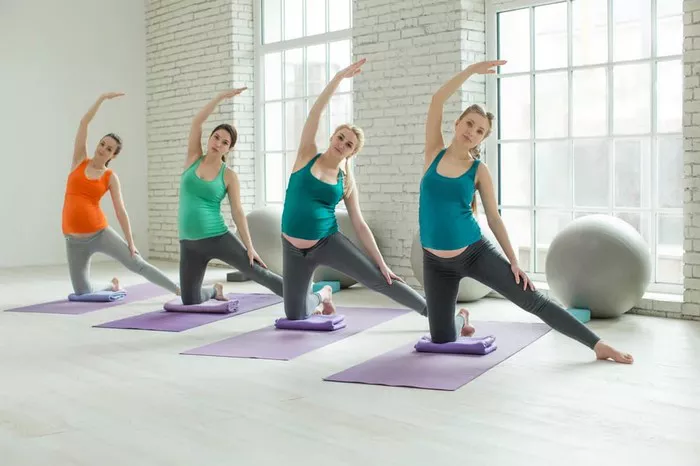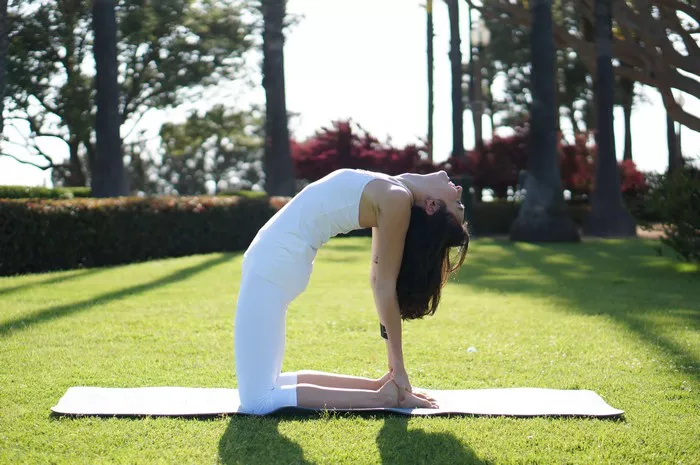Yoga has long been known for its ability to improve flexibility, strength, and mental clarity. Traditionally, yoga practices have been associated with slow and steady movements, focusing on balance, breathing, and relaxation. However, in recent years, a more dynamic and physically intense form of yoga has gained popularity—Power Yoga.
Power Yoga combines the ancient wisdom of yoga with modern fitness techniques, offering a more intense workout that focuses on building strength, endurance, and cardiovascular health. It’s a faster-paced and more physically demanding style of yoga that uses a variety of postures and sequences to challenge the body in ways traditional yoga might not. As a result, many people have turned to Power Yoga for both its physical benefits and mental rewards.
In this article, we’ll explore the numerous benefits of Power Yoga. Whether you’re new to yoga or an experienced practitioner, the advantages of incorporating Power Yoga into your fitness routine are undeniable. From improved fitness and enhanced flexibility to stress reduction and mental clarity, Power Yoga has something to offer everyone.
What Is Power Yoga?
Before diving into the specific benefits, it’s important to understand what Power Yoga actually is. At its core, Power Yoga is a faster-paced version of Vinyasa yoga, which is a style of yoga that emphasizes the flow of breath and movement. Unlike traditional yoga, which might hold poses for extended periods, Power Yoga focuses on continuous movement with minimal rest in between postures.
The practice usually involves a series of dynamic movements designed to increase heart rate, strengthen muscles, and increase stamina. It combines traditional yoga postures such as Downward Dog, Warrior poses, and Plank with more vigorous movements that resemble a workout routine. The intention behind Power Yoga is to build strength and flexibility while keeping the body active and engaged throughout the session.
Some key elements of Power Yoga include
Flowing sequences: These are movements performed in a continuous, fluid manner, often synchronized with the breath.
Strength-focused poses: A greater emphasis is placed on poses that challenge your muscular endurance, like Plank, Chaturanga, and Utkatasana (Chair Pose).
Increased intensity: The pace of the class and the transitions between postures are faster compared to traditional yoga practices.
Focus on breath: As with other forms of yoga, Power Yoga emphasizes deep, mindful breathing to help guide the movements and calm the mind.
The fast-paced nature of Power Yoga means that it provides more of a cardiovascular workout, which is one of the reasons it is often referred to as a “fitness-based” yoga practice. It’s a great choice for people looking for both physical benefits and a mental reset in a single practice.
See also: How Did CorePower Yoga Start?
Power Yoga Benefits
1. Increased Strength and Muscle Tone
One of the most significant benefits of Power Yoga is its ability to increase strength and muscle tone. Unlike traditional yoga, which may focus more on flexibility and balance, Power Yoga involves a variety of poses that target different muscle groups, both large and small.
Power Yoga builds strength through poses like Plank, Downward Dog, Warrior, and various standing poses. These movements engage multiple muscles at once, especially the core, arms, and legs, helping to improve overall muscle tone and endurance. The emphasis on holding poses for longer durations and transitioning between them rapidly forces muscles to work harder, which leads to greater strength gains over time.
As you become more proficient in Power Yoga, you’ll notice an improvement in both your functional strength and muscular endurance. Whether you’re lifting groceries, climbing stairs, or playing a sport, the increased strength from Power Yoga can improve your everyday physical tasks.
2. Improved Cardiovascular Health
Power Yoga isn’t just about building muscle; it’s also great for your heart. The continuous flow of postures combined with rapid transitions increases your heart rate and provides an excellent cardiovascular workout. Power Yoga can help lower blood pressure, improve circulation, and boost overall heart health by engaging both aerobic and anaerobic systems.
The increased heart rate you experience in a Power Yoga class is comparable to moderate-intensity cardio workouts like jogging or cycling. By regularly practicing Power Yoga, you can strengthen your heart, improve circulation, and increase your cardiovascular endurance.
3. Enhanced Flexibility
While Power Yoga focuses heavily on strength, it doesn’t neglect flexibility. The combination of strength-building poses and deep stretches encourages a balanced approach to flexibility. As you progress in your practice, you’ll notice that your muscles become more pliable and less prone to stiffness.
Power Yoga poses such as Forward Fold, Downward Dog, and lunges all require significant flexibility in the hamstrings, hips, and lower back. Over time, the consistent stretching and lengthening of muscles will lead to improved flexibility throughout your body.
This increased flexibility can help reduce the risk of injury, improve posture, and allow for better range of motion in daily activities. As muscles become more flexible and joints are stretched and mobilized, the body becomes more agile and resilient.
4. Weight Loss and Fat Burning
Power Yoga is a dynamic practice that helps to burn calories quickly. The continuous flow of movements helps increase your heart rate and boosts your metabolism, which is key for fat burning. With regular practice, Power Yoga can assist with weight management and fat loss by providing a workout that combines aerobic exercise with strength training.
While it may not be as intense as running or cycling, Power Yoga’s high-intensity nature allows you to burn a significant number of calories. Additionally, because it builds muscle, it helps to increase your resting metabolism, meaning you’ll continue to burn calories even after the workout has ended.
For those looking to lose weight or maintain a healthy weight, Power Yoga can be an effective and enjoyable addition to their fitness routine.
5. Mental Clarity and Stress Relief
Yoga, in general, is known for its ability to calm the mind and reduce stress, but Power Yoga offers this benefit in a more immediate and intense way. Because Power Yoga requires concentration and breath control, it can help clear the mind of distractions and anxieties.
The combination of fast-paced movements and breath awareness has a calming effect on the nervous system. It promotes the release of endorphins, the body’s natural “feel-good” hormones, which helps to reduce stress levels and promote a sense of well-being.
Furthermore, the focus required during Power Yoga practice encourages mindfulness, allowing you to be present in the moment and leave behind the worries of daily life. This can lead to improved mental clarity and emotional balance.
6. Boosted Energy Levels
One of the immediate benefits many people experience after a Power Yoga session is a boost in energy. The combination of physical exertion and breath-focused movements helps to energize the body, leaving you feeling more alert and awake. By engaging in Power Yoga, you activate your muscles, stimulate circulation, and encourage the body to release energy in a way that leaves you feeling refreshed.
Many people report feeling more energized throughout the day after incorporating Power Yoga into their routine. Unlike traditional exercise, which can sometimes leave you feeling drained, Power Yoga’s focus on mindfulness and breath helps you recharge and feel more alive, even after an intense session.
7. Improved Posture
Regular practice of Power Yoga can help improve posture by strengthening the muscles responsible for keeping the spine and torso aligned. Poses like Plank, Cobra, and Cat-Cow stretch and strengthen the back and core muscles, which are essential for maintaining good posture throughout the day.
As Power Yoga builds core strength, it helps to prevent slouching and encourages the proper alignment of the spine. This leads to improved posture, which can reduce discomfort in the neck, shoulders, and lower back—common problem areas for those who spend long hours sitting or working at a desk.
8. Increased Mind-Body Connection
Power Yoga encourages a deeper mind-body connection by incorporating the breath into every movement. The practice teaches you to be more aware of your body’s sensations, helping to develop a deeper sense of presence and mindfulness. By focusing on your breath and maintaining awareness of your body’s movements, you become more attuned to how your body feels during exercise.
This heightened awareness can carry over into other aspects of your life, allowing you to approach challenges with a calm and centered mind. As a result, Power Yoga helps build mental resilience, enabling you to better handle stress, setbacks, and difficult situations both on and off the mat.
Conclusion
Power Yoga offers a wide range of benefits for those looking to improve their physical fitness, mental clarity, and emotional well-being. Whether you’re seeking to build strength, burn fat, improve flexibility, or reduce stress, Power Yoga can provide a comprehensive and effective solution.
It is an excellent choice for people who enjoy a more vigorous, fast-paced workout but still want the mind-body connection that traditional yoga provides. However, it is important to remember that Power Yoga can be intense, and it’s essential to listen to your body, especially if you’re new to the practice. Starting with a beginner-friendly class and gradually increasing the intensity as your body adapts is always a wise approach.
Incorporating Power Yoga into your regular fitness routine can bring lasting improvements to your physical health, emotional well-being, and overall quality of life. The combination of strength, flexibility, cardiovascular benefits, and mental clarity makes Power Yoga a truly holistic practice, allowing you to achieve a balanced, healthy lifestyle.
Related topics:
























